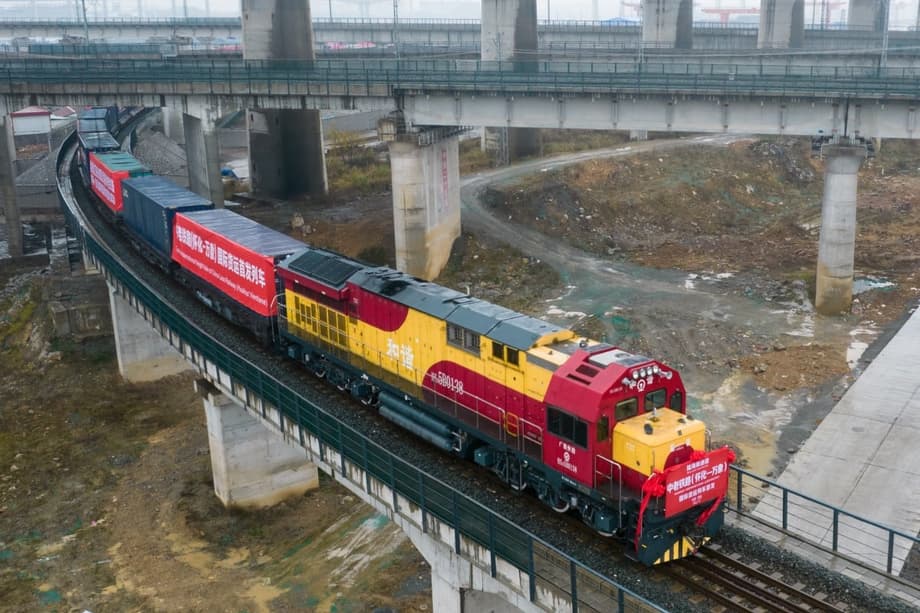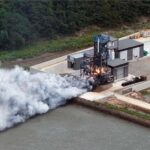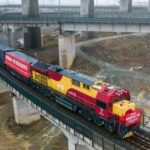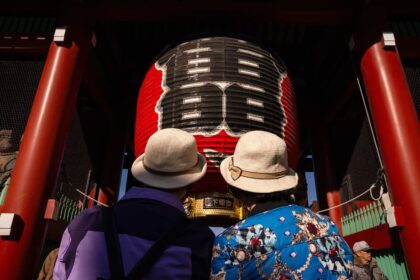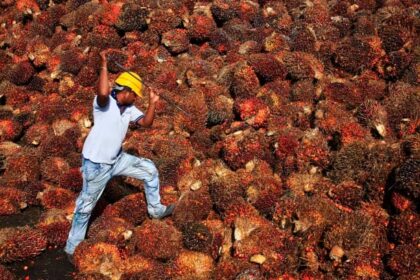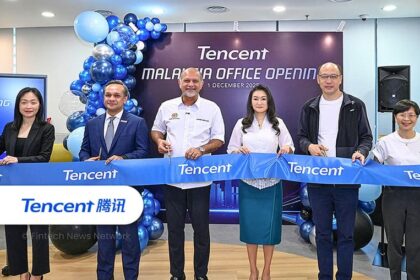A new route to potash security
China has quietly reduced a major supply vulnerability. A four year old railway linking Kunming in Yunnan with Vientiane in Laos now carries Laotian potash to Chinese farms and factories. The line gives Beijing a nearby source of a mineral that underpins crop yields, after years of heavy dependence on suppliers in North America and Eurasia. This shift is tied to an infrastructure bet that is changing both regional trade and the geopolitics of food.
- A new route to potash security
- Why potassium matters for China
- Laos aims to turn potash wealth into growth
- How the railway changes the cost equation
- North America’s lost bargaining chip
- Regional connections extend beyond China
- Benefits and risks for Laos
- What it means for green energy and life sciences
- Can Laos scale up sustainably
- At a Glance
Potash, a potassium rich salt most commonly sold as potassium chloride, is one of the three main fertilizer nutrients alongside nitrogen and phosphorus. China holds less than 4 percent of known global reserves, and much of that is in salt lakes in remote regions that are costly to develop. For decades it imported millions of tons from Canada, Russia, and Belarus. The 2021 sanctions on Belarus and the 2022 war in Ukraine, which complicated Russian exports, pushed prices higher and revealed how exposed China was to disruptions far from its borders.
The China Laos Railway, a roughly 1,000 kilometer line that opened in late 2021, moves both passengers and freight at up to 200 km/h (124 mph). Freight trains have become a pipeline for bulk commodities, including mineral salts from Laotian deposits. A recent study from Chinese authorities describes the corridor as a critical conduit for potassium supplies. The same network is helping advance industries that consume potassium compounds, including parts of green energy and life sciences. Confidence born of a steadier fertilizer outlook also gives Beijing more room in trade negotiations with Western partners, since a key pressure point has been blunted.
As access to Laotian deposits improves, China heads into future crop seasons with greater predictability on soil nutrients and a realistic alternative to distant providers. North America no longer holds the same bargaining chip over this essential input for the global food system.
Why potassium matters for China
Modern farming depends on NPK fertilizers. Nitrogen fuels plant growth, phosphorus supports roots and flowering, and potassium improves water regulation, disease resistance, and crop quality. Farmers cannot easily substitute away from potassium without sacrificing yields. China is among the largest buyers of potash in the world, because the country plants large areas of corn, rice, wheat, and fruit that require steady potassium application to maintain output.
Canada is the top producer and exporter of potash, with giant mines in Saskatchewan. Russia and Belarus are also major suppliers. For many years Chinese import volumes and prices were anchored by long cycle contracts and spot purchases from these sources. That changed when sanctions disrupted Belarusian output and logistics, and when the war caused freight and insurance complications for Russian shipments. Prices climbed sharply in 2022. Even after a partial normalization, the risk premium on distant, politically exposed supply routes remains.
Domestic Chinese resources are not enough to cover demand. Salt lake projects in Qinghai and Xinjiang have grown, but extraction and processing are sensitive to geological and climate conditions. That leaves imports as a structural necessity. Bringing new suppliers into the mix is the fastest way to lower risk and stabilize farm inputs.
Laos aims to turn potash wealth into growth
Laos sits on sizable potassium salt resources. The government has promoted potash as a pillar industry to lift incomes and convert the country from landlocked to land linked. Policy papers in Vientiane describe potential output that could eventually place Laos among the top tier of producers. Minerals and metals already account for more than a quarter of exports, and potassium salt appears frequently on monthly export rankings.
Turning geological promise into reliable shipments is not automatic. Independent assessments point to uneven mining performance, gaps in technical expertise, mixed compliance with environmental and labor standards, and macroeconomic stress that complicates investment. Laos has wrestled with high inflation, a weakening currency, and heavy external debt. Nearly half of sovereign external debt is owed to Chinese creditors. Even so, the government remains committed to potash development, and the railway has improved the economics of getting material to market.
Western sanctions on Russia and Belarus tightened global supply in 2022 and 2023, which gave Laotian producers a window to sell more to China. Traders and company statements in the region outlined a surge in fertilizer related cargoes moving north through the rail corridor. The dynamic reinforced the role of Laos as a nearby, politically aligned supplier for the Chinese market.
How the railway changes the cost equation
The China Laos Railway connects Kunming directly to Vientiane, cutting through mountains and rainforest with bridges and tunnels. It is Laos first long distance railway. Travel times for people and goods fell dramatically compared with trucking on winding roads. Cargo moves from mines and processing plants to rail depots, then to the Thanaleng Dry Port near Vientiane for customs clearance and onward shipment into China. The trains handle minerals, agricultural products, electronics, and consumer goods in both directions.
Beyond the headline speeds, the logistics gains come from fewer transshipment points, predictable timetables, and lower fuel costs per ton. Potash is a bulk commodity with relatively low value per kilogram, which makes transport efficiency decisive for margins. Rail lowers the delivered cost into Yunnan and further into China compared with road only routes.
Trade data points to a shift
The railway carried over 10 million tons of goods within its first years of operation, according to data cited by Lao and Chinese officials. Cross border passenger services began in 2023 after pandemic restrictions ended, but freight never stopped. Monthly trade reports from Vientiane show potassium salt among the top exports, with China as the largest buyer. A recent month recorded a national trade surplus as exports of minerals, including potassium salts, rose while fuel imports eased. This pattern, while not uniform, supports the view that rail has unlocked new volumes and destinations.
Thailand is building its section of a north south rail link and has approved a logistics hub at Nong Khai to connect the Thai meter gauge network with the standard gauge used by the China Laos line. When complete, the system will allow smoother cargo transfers from Bangkok and eastern seaboard ports into Laos and onward to Yunnan. That integration will lower costs for exporters in Thailand and give Laotian producers better access to regional markets.
North America’s lost bargaining chip
For years, China’s dependency on distant potash suppliers gave Canada, and to a lesser extent the United States, quiet leverage. The influence did not come from government embargoes, since potash trade is largely conducted by private companies under commercial contracts. It came from market structure. A small number of producers controlled a large share of export capacity. Long shipping distances and limited substitutes created pressure points that could be felt in price talks, delivery schedules, and broader trade discussions.
China’s ability to source more potassium from a neighbor reshapes that dynamic. Laotian output is still small compared with Saskatchewan’s giant mines, but even moderate volumes can change pricing power at the margin when timed around the planting season. Additional inland sources reduce exposure to seaborne freight disruptions and insurance costs. They also make it easier for Beijing to say no in negotiations if terms look unfavorable. The presence of an overland alternative, combined with the gradual recovery of Russian supplies and the diversification of domestic salt lake output, reduces the odds that one region can squeeze China on an input so central to food security.
Producers in North America will likely continue to sell into China, since their scale and quality are competitive. The difference is that the buyer has more options and better logistics intelligence. That usually translates into firmer bargaining and greater resilience during global shocks.
Regional connections extend beyond China
The railway is part of a larger vision to stitch mainland Southeast Asia together. Policymakers in Bangkok plan to finish Thailand’s rail segment that links Bangkok to Nong Khai by 2030. Laos and Malaysia have also formed a rail sea partnership that integrates the China Laos line with Malaysian ports on the west coast. The Thanaleng Dry Port in Vientiane, which manages customs for the railway, is building ties to shippers and terminals from Penang to Johor to shorten transit times and reduce documentation friction.
Azman Shah Mohd Yusof, chief executive of MMC Port Holdings in Malaysia, framed the cooperation as a win for efficiency and regional growth. Before a ceremony with Lao leaders, he said the route will cut transit times, improve supply chain performance, and support ASEAN connectivity goals.
“We are pleased to contribute to Thanaleng Dry Port’s efforts to realise Laos national strategy to transform from a land locked country to a land linked nation,” said Azman Shah.
Sakhone Philangam, managing director of the Thanaleng Dry Port, underscored why partnerships matter for a small economy.
“In logistics, you need agglomeration and massification. We do not have that volume, so this partnership will enable us to tap into a larger logistics network,” said Philangam.
This wider network matters for potash too. Access to more ports and inland hubs expands the set of buyers, lowers storage costs, and allows producers to arbitrage prices across seasons and regions. It also creates opportunities for Laos to export higher value processed products instead of only raw mineral salts.
Benefits and risks for Laos
The railway has increased trade and tourism, created jobs, and opened new markets for Laotian goods. Towns along the line report more visitors and new services. The education system is training more workers in rail operations. As cargo volumes rise, local businesses that provide warehousing, maintenance, customs brokerage, and catering gain customers. The government’s goal to move from landlocked to land linked looks more attainable from a logistics standpoint.
The financial picture is more complicated. The project cost about 5.9 billion dollars. China provided most of the funding as part of its Belt and Road program, through equity and loans. Laos entered the project with weak public finances. The local currency later slid, inflation rose, and debt service consumed a large share of government revenue. Analysts warn that while the project brings tangible benefits, the country remains reliant on debt deferrals and support from Beijing to stay current on obligations. Laotian institutions also face pressure to improve transparency and enforcement in mining and transport.
There is a wider debate over debt trap diplomacy. Evidence points to a mix of factors behind Laos debt stress, including domestic planning errors, over investment in power generation for the wrong markets, and weak governance. China has extended help through swaps and deferrals, but the terms are not always public. The upshot is that while the railway can help Laos grow out of trouble, the path requires policy discipline, better oversight of mining and logistics projects, and, potentially, cooperation with multilateral lenders to restructure liabilities to a sustainable level.
Environmental and social concerns require attention. Potash extraction involves brine pumping and processing that can affect land and water if not managed well. Communities near mines need clear safeguards, proper compensation, and ongoing monitoring. The same is true for railway noise, land acquisition, and construction impacts. Addressing these concerns early makes production more reliable and reduces the risk of sudden shutdowns or legal disputes.
What it means for green energy and life sciences
Potassium compounds are central to more than fertilizer. Potassium hydroxide is used in alkaline batteries and in some flow battery chemistries. Researchers are advancing potassium ion batteries as a potential complement to lithium ion technology for specific use cases, because potassium is abundant and has favorable electrochemistry. Potash also feeds into glass and ceramic manufacturing, some pharmaceutical processes, and food processing.
Stable access to potassium salts lowers costs for downstream chemical producers in China, which helps scale newer technologies and diversify inputs for established industries. The volumes required for batteries and specialty chemicals are smaller than fertilizer, but the presence of local suppliers and cheaper logistics can make pilot projects more viable and shorten time to market.
Can Laos scale up sustainably
Laos can convert resource potential into balanced growth if it tackles constraints that have slowed progress in the past. The priority list includes raising technical standards in mining, enforcing environmental rules consistently, and building a pipeline of skilled workers. Transparency around licenses, royalties, and export data would build trust with investors and neighboring countries. Partnerships with experienced operators can lift quality and raise recovery rates, which means more output with less waste.
Infrastructure coordination matters. The planned Thai rail connection and the Malaysia rail sea link will only deliver full value if customs, standards, and documentation are harmonized. The Nong Khai logistics hub aims to make transfers between meter gauge and standard gauge more efficient. Extending that approach to digital systems, pre clearance, and tracking would reduce delays and shrink working capital needs for exporters.
For China, steady Laotian supply should be treated as a complement, not a replacement, for other sources. Maintaining diversified imports from Canada and elsewhere cushions against weather events, mine outages, or policy shifts. For Laos, a customer base that includes multiple end markets, not only China, will support more stable prices over time.
At a Glance
- China’s rail link to Laos is moving growing volumes of potash into Chinese markets, reducing reliance on distant suppliers.
- Potash is essential to crop yields, and China holds less than 4 percent of global reserves, which makes imports structural.
- Disruptions tied to sanctions on Belarus and the war affecting Russia exposed China’s vulnerability and lifted prices in 2022.
- The China Laos Railway, about 1,000 kilometers long, cuts transport costs for bulk minerals and has carried more than 10 million tons of goods in its early years.
- Laos is promoting potash as a pillar industry, but faces technical, regulatory, and debt related challenges that could slow expansion.
- Regional links are expanding as Thailand builds its section toward Nong Khai and Laos partners with Malaysian ports to create a rail sea route.
- China gains bargaining power in fertilizer procurement, while North American producers face a buyer with more options.
- Stable potassium supplies can support niche uses in energy storage, glass, and pharmaceuticals, though fertilizer remains the largest market.


